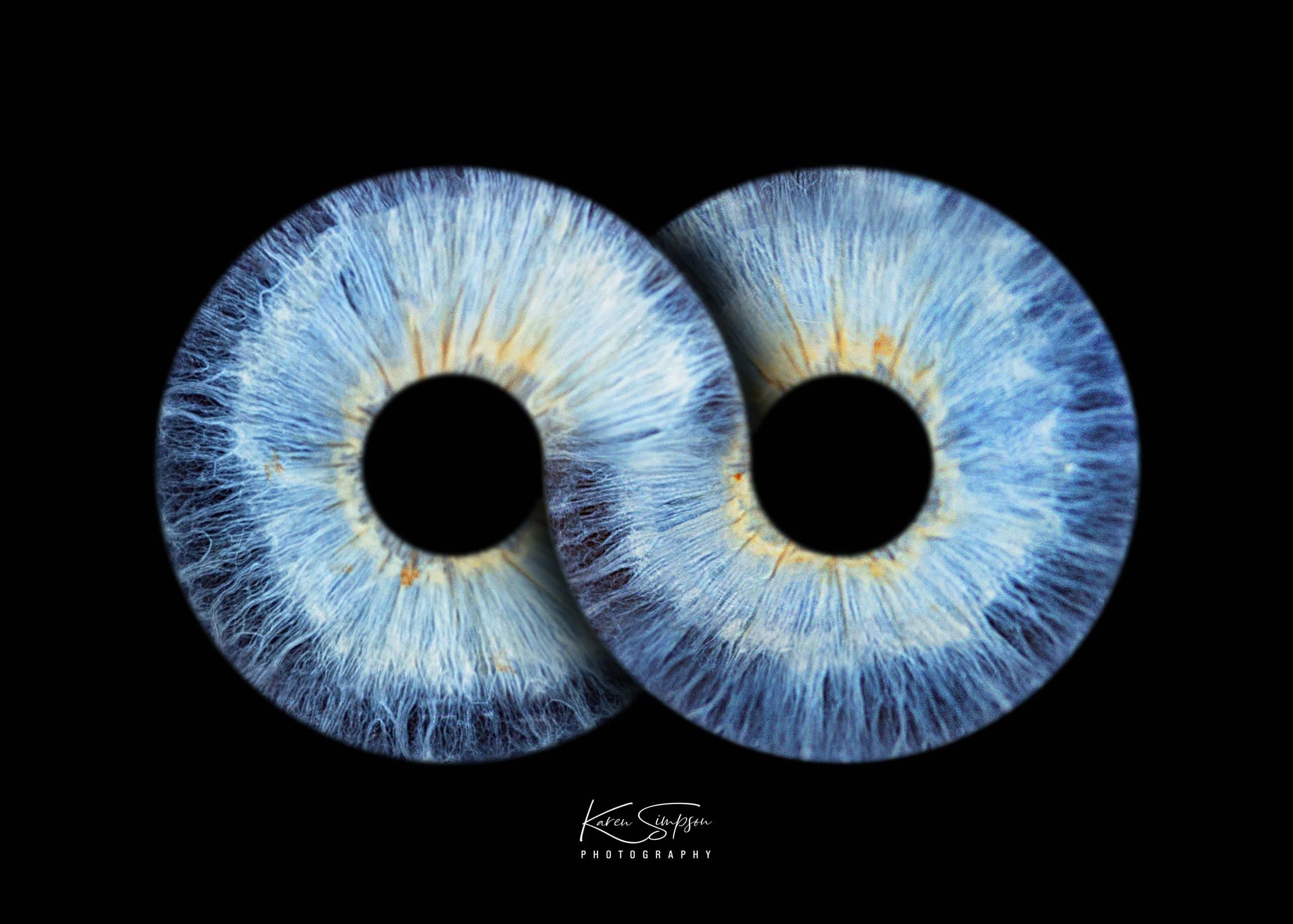
Why No Two Irises Are the Same: The Science Behind It
The human iris is one of the most unique and fascinating features of the human body. Much like fingerprints, the iris of each person is entirely unique—even identical twins, who share nearly the same genetic code, have different iris patterns. This is due to a complex blend of genetics, developmental processes, and environmental factors. Here’s a deeper dive into the science of the iris and why it makes every photograph in Iris Photography truly one-of-a-kind.
The Development of the Iris: A Genetic Blueprint
Your iris begins developing in the womb, starting around the third month of pregnancy. The genes you inherit from your parents play a role in determining the overall structure of your iris, including its colour and some of its early characteristics. However, while your genetic code lays the foundation, it’s not the only factor involved.
As the iris forms, tissues fold, expand, and contract, creating the intricate ridges, crypts, and furrows that give the iris its texture. This process is influenced by both genetic instructions and random developmental variations. The exact way these tissues fold and form is unpredictable, which leads to differences even among people with similar genetic makeup.
Why Identical Twins Have Different Irises
One of the most interesting aspects of iris uniqueness is that even identical twins, who have nearly identical DNA, don’t share the same iris pattern. This is because much of the detail in the iris results from random events during fetal development rather than strictly genetic programming. As the tissue in the iris forms and pigment is deposited, tiny variations occur. These can be influenced by the local environment in the womb, such as the position of the fetus or subtle differences in blood flow to the eye. The above photo is of identical twins, as you can see they are similar but not identical.
This randomness makes it nearly impossible for two irises to be identical, even in twins. It’s a natural process that ensures variability in every individual.
Melanin and Iris Colour
The colour of your iris is determined by the amount of melanin—a pigment also found in skin and hair—present in the iris. The more melanin your iris contains, the darker it will be. For example, brown eyes have a higher concentration of melanin, while blue or green eyes have less.
Melanin distribution is partly controlled by genetics, but like the structural pattern, it also involves developmental factors. The way melanin is deposited in the iris can vary, leading to the wide variety of eye colours we see in people around the world. This combination of genetics and developmental variation creates not just unique textures, but also a diverse array of colours, making each iris distinct.
The Role of the Stroma and Pigmentation
The stroma, the front layer of the iris, plays a key role in its appearance. The fibres in the stroma, which form the intricate patterns we see, are influenced by both genetics and random processes that occur during eye development. The arrangement of these fibres and the pigmentation within them gives the iris its distinctive look.
The crypts (small depressions) and furrows (ridges) that appear in the iris create shadows and highlights, which make the eye even more visually complex. These features are not solely determined by genetics—they are the result of the dynamic and unpredictable nature of fetal development.
Environmental Factors: Subtle Influences
In addition to genetics and developmental factors, subtle environmental influences also play a role in shaping the iris. Variations in blood flow, oxygen levels, and other environmental conditions within the womb can affect the development of the eye. Even small differences in these factors can lead to unique patterns in the iris.
While these influences are difficult to predict or control, they add to the complexity of the iris. This is why no two irises are exactly the same, even in people who share the same genetic background.
Why Iris Photography Captures True Uniqueness
When you choose to have your iris photographed, you’re capturing a one-of-a-kind feature that reflects both your genetic makeup and the random, unpredictable processes that shaped you before birth. The intricate details of your iris are more than just a beautiful pattern—they’re a map of your unique development.
Iris Photography brings these details to life, highlighting the textures, colours, and patterns that make your iris truly yours. Because no two irises are alike, every photo taken through this process is as individual as the person behind it, making each image not only a piece of art but a reflection of your personal identity.
Conclusion: A Unique Window to Your Identity
The science behind iris uniqueness is both fascinating and complex, involving a mix of genetic coding, developmental randomness, and environmental factors. These elements work together to create something truly extraordinary—an iris that belongs solely to you.
Through Iris Photography, you can capture this uniqueness and transform it into a beautiful, lasting work of art that reflects your individuality. Whether for yourself or as a gift, each photograph is a testament to the intricate and personal nature of the human eye, a feature shaped by both nature and chance.
If you’d like to capture the unique beauty of your own iris, feel free to contact me for a session. Your iris is more than just a part of your eye—it’s a remarkable expression of who you are.


